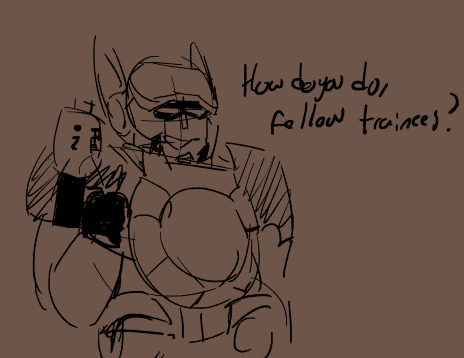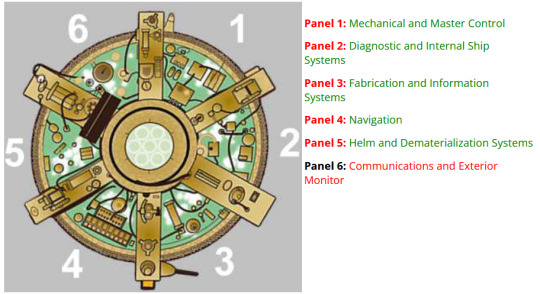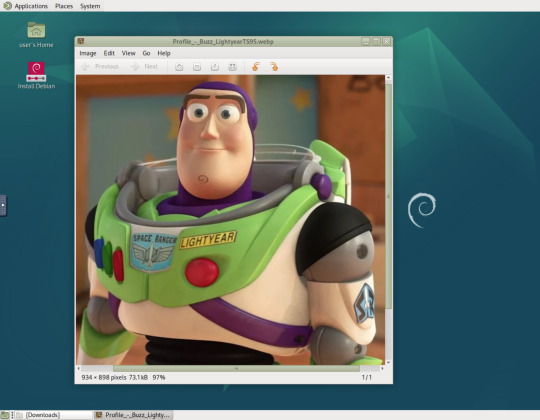#Support vector machine
Explore tagged Tumblr posts
Link
#Data mining#Decision tree#K-nearest neighbor#Machine learning#Multilayer perceptron#Support vector machine#WEKA
1 note
·
View note
Text
"in these difficult times it's more important than every that you support vector machines in your community"
#SVM (support vector machines) are an old ML technique#here it's “machine that uses support vectors”
29 notes
·
View notes
Text
Prädiktive Markttrendanalysen: Datenbasiertes Vorgehen
In einer Welt, in der Märkte sich rasant verändern und Unternehmen ständig gefordert sind, sich anzupassen, gewinnen prädiktive Markttrendanalysen zunehmend an Bedeutung. Diese Analysen ermöglichen es Unternehmen, zukünftige Entwicklungen vorherzusagen und Strategien proaktiv zu gestalten. Durch den Einsatz moderner Technologien und datenbasierter Methoden können Unternehmen wertvolle…
#Entscheidungsbäume#Führung#maschinelles Lernen#Neuronale Netze#Regression#Support Vector Machines#Zeitreihenanalyse
0 notes
Text
Love music school so much!!!!! Bought flowers for choir recital where roommate is singing and bf is on the piano, hiding in the piano building after concert and in the bass studio nearby someone’s practicing Haffner which im studying in conducting
#meanwhile I was trying to catch up with all the machine learning classes I missed#fuck you kernel support vector machine#I love HAFFNER SYMPHONY MY BELOVD
0 notes
Text
like, when I was in college in 200[mumble], well before the current AI boom, I took a class with AI in the name, taught by an experienced person in the field. we covered minmax with alpha beta pruning (the sort of thing you would use when building a video game AI), support vector machines, neural networks, planning, and all kinds of other things I've forgotten about. there wasn't any sense that "AI" can only refer to human-ish intelligence, just that the field is ill-defined (just like the term "intelligence").
i think the idea that an LLM isn't "real AI" is just a result of the massive overhype AI is experiencing right now with the desire to both put AI in everything and to call everything AI. but I suspect that if you took chatgpt or stable diffusion back in time 20, 30, 40 years and showed them people doing work in the field and asked "is this AI" you'd definitely get a good chunk of people saying "yes". of course I could be talking out of my ass here, I'm not a historian of AI, but that idea fits nicely with the fact that neural networks are actually a fairly old field of study.
215 notes
·
View notes
Text
As requested, here is an edited version (although I left some stuff in that doesn't really need to be there, like the whole section on the NPT) of my paper on nuclear strategy in the Sonic Adventure series:
None of this is good, Vector. That’s why it’s called war.
- Knuckles the Echidna, in Sonic Forces (2017)
Sonic the Hedgehog is a very weird video game series.
(Author's note: the quality of this paper does not reflect the majority of my academic writing. It was for a 200-level (beginner's) English class wherein I was encouraged to do whatever I wanted and not worry about tone, topic, etc. I also wrote it in less than a day after having written 3 other papers the same week, and was suffering from sleep deprivation and brain fog while writing it. I have not included my references in this post because they were done in Chicago footnote format and don't paste into Tumblr well. If you want more info on anything I mention, I will gladly provide sources on said topics! Ty ty)
---
Sonic the Hedgehog is a very weird video game series.
This statement has nothing to do with its varying quality of gameplay. Sonic the Hedgehog is weird because its surface presentation as a colourful, furry-adjacent Dragon Ball rip-off disguises its extremely fascinating perspectives on warfare. The games frequently feature weapons of mass destruction in its stories, which allows for interesting analysis on the strategies used in-game and how it relates to American perspectives on nuclear war. The first game analyzed will be Sonic Adventure, which depicts an attempted nuclear strike on an American city. The second game analyzed will be Sonic Adventure 2, which features an attempt at WMD-boosted bargaining. These games will be used to answer the following research question: which side does Dr. Eggman take in the Borden-Brodie debate on nuclear weapons strategy?
As a brief explanation, the Borden-Brodie debate is about how nuclear weapons will actually be used in a nuclear war between two states. This debate emerged in the late 1940s and early 1950s, as theorists attempted to predict the future of war after the atomic bombing of Hiroshima and Nagasaki. Borden predicted that nuclear weapons would be used as “big artillery” to support regular military attacks, whereas Brodie predicted that the devastating effects of nuclear weapons would make war between two nuclear weapons states (NWS) inconceivable. Brodie appears to have won the debate as nuclear doctrine shifted to favour deterrence during the Cold War, but we must consider the following idea: perhaps, in the grand scheme of things, there has not been a conflict worth using them for just yet.
What is the geopolitical situation in Sonic the Hedgehog? Technically, the series takes place on Earth, but it’s a little different. Instead of the United States, there is the United Federation, instead of Greece there is Apotos, and instead of Africa there is Mazuri, because even the fun cartoon animal game cannot keep itself from generalizing the entire African continent into one entity. These countries are predominantly inhabited by humans, who live on the continents, and the animal-people (like Sonic and friends) live on small offshore islands. There has never been an explanation for why this separation exists, and while it could be fun to explore potential reasons, that is not the point of this paper!
Dr. Eggman typically begins his campaigns of world domination on these islands. He captures small animals to be used as batteries in his machines and builds extractive industrial plants, such as oil refineries and chemical plants. Sonic opposes him in the earlier games because he is harming the environment, and this has turned into a standard rivalry as the games have continued and Eggman’s evil plans have grown in scale. As soon as the games give the characters spoken dialogue in Sonic Adventure, Eggman’s schemes move away from resource extraction and towards using huge weapons and awakened ancient gods in order to conquer the planet. This is where the weapons of mass destruction come into play.
The first depiction of a WMD in Sonic the Hedgehog is in Sonic Adventure, where Eggman attempts to murder-suicide Station Square (in-universe San Francisco) by firing a submarine-launched ballistic missile (SLBM) at the city while he is still in it. He does this because he is upset that his plan failed, although perhaps he was attempting to show us mercy by wiping all the Silicon Valley bros off the face of the planet. Regardless of exact intention, his attempt to nuke Station Square says a lot about his perspective on nuclear war, which will be discussed below.
When dealing with an enemy, their perception of you and their own weapons are crucial to understand. The norm in nuclear doctrine is that nuclear weapons are used in retaliation to extremely high levels of threat. However, this has not always been the case—in the 1950s, they were generally perceived as really big bombs that could be used in combination with normal artillery. This theory was emphasized most by the radically anti-communist William Borden, also famous for testifying against Oppenheimer in his security clearance review, who argued that nuclear war will target military infrastructure and end when one side in the conflict has run out of weapons. Therefore, it is in the best interest of the United States to possess as many weapons as possible because it is the quantity they possess that will render them victorious. City-busting occurs after the war, when you are free to hurt your enemy’s civilian population without fear of retaliation. Or, perhaps, when you have nothing left to lose—which is exactly what happened in Eggman’s case.
Borden predicted that nuclear weapons states would disperse their launchers and military bases to make them harder to strike. He likewise predicted the use of nuclear missile-equipped submarines (SSBNs), which are used strategically for second strikes; submarines are hard to find, and can be positioned close to the enemy, making them very useful for retaliation. This is precisely in line with Eggman’s attack in Sonic Adventure 1, which used an SSBN close to the enemy’s civilian population as a last resort punishment after he incurred heavy losses. Whether or not this was a smart thing for Eggman to do is up in the air—the SLBM appeared to be an attempted surface burst on a city, which would actually minimize casualties when compared to an air burst detonation, so it is very likely that he cares more about building cool bombs than understanding how to use them properly—but it is clear that he is a champion of the Borden expectations of nuclear warfare nonetheless!
Eggman’s arguably insane, vengeful attack on Station Square stokes fears of nuclear armageddon that were hyper-present during the Cold War. Although he has been referred to as Dr. Eggman exclusively so far in this essay, this is not the case in Sonic Adventure—Tails, the character present in the city while the attack happens, refers to him as “Dr. Robotnik”. The character’s “real” name is Ivo Robotnik, which was given to him by American translators in lieu of “Eggman” when the classic games first released. It may not be surprising that American translators at the end of the Cold War decided to give an industrialist who primarily wears red an Eastern European sounding name. Russians are disproportionately featured as enemies in video games, eclipsing both the Axis Powers (typically Germany or Japan) and Arabs (as terrorists) in studied games. In wartime, framing one’s enemies as irrational is a core component of propaganda. Depicting someone named “Robotnik” as a self-driven madman who is willing to nuke an entire city when he loses feeds into assumptions that the enemies of the United States are not rational, which is then used to justify US hegemony on the international scene—someone has to keep these unruly states in line! This is especially true for the non-proliferation regime, which has been regarded by some states as neocolonial. India, a nuclear weapons state, has argued that the Treaty on the Non-Proliferation of Nuclear Weapons is discriminatory because it does not ban vertical proliferation. This stance generally purports that non-proliferation treaties are used to keep nuclear weapons out of “undesirable” hands while allowing nuclear weapons states to maintain and build on their own stockpile (vertical proliferation). Fears of certain states (such as Iran or North Korea) acquiring arsenals are presented as imminent dangers because enemies of the United States are always inherently irrational, and therefore cannot be trusted with such powerful weapons. The idea of “rationality” has been weaponized in service of white supremacy—and to a lesser extent, the patriarchy—for centuries and it should surprise no one that an international nonproliferation regime, largely built by and for states who were founded and are sustained on the premise of white supremacy, would prop up inequality and keep nuclear weapons only in the hands of those who “deserve” them. Although Russia is not a victim of this regime, it is frequently depicted as irrational and untrustworthy with nuclear weapons. Robotnik’s attack on Station Square is reminiscent of this rhetoric.
Of course, Sonic is a Japanese video game, which should grant it some leniency in the depiction of a nuclear attack as inherently irrational and violent. But for American players, who are meant to perceive this as an attack on a fictionalized version of their country, the implications are more specifically anti-Russian.
Sonic Adventure 2 flips this script a bit: as it would turn out, Eggman is American, and members of his extended family were killed in a coverup operation by the Sonic equivalent of the US military, Guardian Unit of Nations—typically abbreviated to GUN. His grandfather, Gerald Robotnik, was commissioned to research immortality and weapons of mass destruction aboard the space colony ARK. One of his creations was the Eclipse Cannon, a giant laser capable of destroying the planet.
Between games, Eggman has seemingly underwent the same attitude shift as every other NWS during the Cold War, because he has now discovered that WMDs can be used to threaten your enemies into getting what you want. On the ARK, Eggman activates the Eclipse Cannon and does the following:
1. Uses its laser to destroy part of the moon in a show of force;
2. Threatens to use it against the Earth unless he is crowned emperor of the planet;
3. Gives Earth 24 hours to accept.
Did Bernard Brodie predict the plot of Sonic Adventure 2? In his earliest work The Absolute Weapon, he argued that the absolute power of a nuclear bomb would make wars too costly to fight. The primary purpose for governments would therefore be to avoid war at all costs, since any of them could result in devastating nuclear war. Brodie also wrote many pieces laying out strategies of nuclear deterrence, which continue to be used to this day.
There is a common knee-jerk reaction to Eggman’s story that I see in fan discussions of the game. Many comments feature the following logic: “Why would Eggman blow up the planet he wants to rule? Either the writer is stupider than me, or Eggman is lying!” This is a very understandable way to perceive his threat with the Eclipse Cannon—why would someone make such an unreasonable threat? Does he really expect it to work? Who is going to buy this?
The game provides no insight into the general reaction to this by the world’s governments. However, Sonic and friends believe his threat right away, and race to the ARK to stop him. They are correct to do so—Eggman does end up trying to use the Eclipse Cannon against the Earth, but it does not work because Gerald Robotnik programmed it to fail if ever used. Therefore, we know that Eggman was not bluffing about his threat to destroy the planet at all. We know that he was actually going to do it. So, why do fans of the game continue to argue that Eggman’s threat was pointless?
Bernard Brodie’s concept of the absolute weapon has become the mainstream view of WMDs in the public consciousness. We fear nuclear weapons because of their destructive power and believe that no conflict could ever require their deployment. We believe other NWS hold the same concerns. This perspective is then projected onto Eggman by fans, who mistakenly assume he should foster the same feelings about WMDs. The assumption that Eggman was not willing to go through with his plan, or that the world’s governments would not surrender to him, requires Eggman to value his own life over the success of his empire. The first Sonic Adventure game has Eggman attempt to nuke a city he is standing in. A suicidal, last-ditch plan to take over the world is perfectly in-line with his character. What is the point of living if he cannot have his way? What is the point of a planet’s existence if he is not the one in charge? These are the questions driving Eggman’s decisions in the games.
Sonic Adventure 2 does not reject Brodie’s theories, but does provide a counterargument: deterrence breaks down when one’s ambitions outgrow the potential retaliation for acting upon them. Eggman’s dream of ruling the world was stronger than his will to live. Mortal terror was not enough to curb his imperial ambitions, and the Earth was almost destroyed as consequence of this perspective.
When the two games are measured against one another, it becomes apparent that Eggman has taken a very clear stance on the Borden-Brodie debate: he is a supporter of the Borden perspective on nuclear war! He does not believe in absolute deterrence and treats WMDs as usable tools in his arsenal, even at a potential detriment to himself. His actions in Sonic Adventure 2 align his views with one of Borden’s biggest theories: the winner of a nuclear war will not be the state who inflicts the most damage on their enemy, but rather the one who does not run out of nuclear weapons first. Eggman is determined to be the last one standing—even if it means standing alone atop the ashes of the world.
#sonic the hedgehog#this is honestly just a long shitpost pls do not take it super seriously#redposts
36 notes
·
View notes
Text
does anybody care about beast wars neo more specifically heinrad who singlehandedly kept me invested the entire show







His robot mode is so freaking stupid looking. imma be so fr the anime designs were pretty hit or miss. And Leo Convoy was kinda the best it got when it came to the beast designs at least I mean nothing tops goth Starscream and his huge goth wife tho i need to draw them more they're beautiful.
I watched the beast wars animes and beast machines a while back but i never made a post compiling my reactions because last one kinda clogged my page?
I will say though that though just general knowledge of vector sigma having time powers.. I associated him with heinrad. I was all like "oh i can put him in my fanfiction." I did NOT expect his connection to vector sigma or that he actually was different from everyone else. In fact when he and stampy reverse engineered the blentron's warp tracing or whatever it was i was like "oh wow i know they're kinda the smartest on the ship but i didn't think they were that smart. i bet it was mostly stampy's work and heinrad just kinda was there for moral support haha"
ALSO VECTOR SIGMA BEING A WOMAN THREW ME FOR A LOOP??? Theres a lot to say about this show despite it being mostly filler. same with it's predecessor Beast Wars 2, but despite how hard it was to get through i did enjoy it i suppose. Genuinely I think they did a better job than Beast Machines but that's not saying much.
Beast wars neo is why LSOTW messed me up so bad, I thought it was going to be a fun adventure where they all get to learn how to be wreckers... and i suppose they did.. i suppose they did. ALSO!! the fact they used characters from the beast wars animes in requiem.. like i at least saw stampy, scuba, and I think they based the bear's design off of Survive? I think I also say Beast Wars Neo Hydra either in the finale or attacking the throttlebots on Botania? also when they called the planet botania i lost my mind a little bit teehee oh my gosh what if she BECAME the planet?
#transformers#tf heinrad#tf dinobot#bw dinobot#beast wars#dinobot#beast wars neo#tf beast wars#tf mach kick#vector sigma#tf vector sigma#maccadam#maccadams#my art
29 notes
·
View notes
Text
Old-school planning vs new-school learning is a false dichotomy
I wanted to follow up on this discussion I was having with @metamatar, because this was getting from the original point and justified its own thread. In particular, I want to dig into this point
rule based planners, old school search and control still outperform learning in many domains with guarantees because end to end learning is fragile and dependent on training distribution. Lydia Kavraki's lab recently did SIMD vectorisation to RRT based search and saw like a several hundred times magnitude jump for performance on robot arms – suddenly severely hurting the case for doing end to end learning if you can do requerying in ms. It needs no signal except robot start, goal configuration and collisions. Meanwhile RL in my lab needs retraining and swings wildly in performance when using a slightly different end effector.
In general, the more I learn about machine learning and robotics, the less I believe that the dichotomies we learn early on actually hold up to close scrutiny. Early on we learn about how support vector machines are non-parametric kernel methods, while neural nets are parametric methods that update their parameters by gradient descent. And this is true, until you realize that kernel methods can be made more efficient by making them parametric, and large neural networks generalize because they approximate non-parametric kernel methods with stationary parameters. Early on we learn that model-based RL learns a model that it uses for planning, while model free methods just learn the policy. Except that it's possible to learn what future states a policy will visit and use this to plan without learning an explicit transition function, using the TD learning update normally used in model-free RL. And similar ideas by the same authors are the current state-of-the-art in offline RL and imitation learning for manipulation Is this model-free? model-based? Both? Neither? does it matter?
In my physics education, one thing that came up a lot is duality, the idea that there are typically two or more equivalent representations of a problem. One based on forces, newtonian dynamics, etc, and one as a minimization* problem. You can find the path that light will take by knowing that the incoming angle is always the same as the outgoing angle, or you can use the fact that light always follows the fastest* path between two points.
I'd like to argue that there's a similar but underappreciated analog in AI research. Almost all problems come down to optimization. And in this regard, there are two things that matter -- what you're trying to optimize, and how you're trying to optimize it. And different methods that optimize approximately the same objective see approximately similar performance, unless one is much better than the other at doing that optimization. A lot of classical planners can be seen as approximately performing optimization on a specific objective.
Let me take a specific example: MCTS and policy optimization. You can show that the Upper Confidence Bound algorithm used by MCTS is approximately equal to regularized policy optimization. You can choose to guide the tree search with UCB (a classical bandit algorithm) or policy optimization (a reinforcement learning algorithm), but the choice doesn't matter much because they're optimizing basically the same thing. Similarly, you can add a state occupancy measure regularization to MCTS. If you do, MCTS reduces to RRT in the case with no rewards. And if you do this, then the state-regularized MCTS searches much more like a sampling-based motion planner instead of like the traditional UCB-based MCTS planner. What matters is really the objective that the planner was trying to optimize, not the specific way it was trying to optimize it.
For robotics, the punchline is that I don't think it's really the distinction of new RL method vs old planner that matters. RL methods that attempt to optimize the same objective as the planner will perform similarly to the planner. RL methods that attempt to optimize different objectives will perform differently from each other, and planners that attempt to optimize different objectives will perform differently from each other. So I'd argue that the brittleness and unpredictability of RL in your lab isn't because it's RL persay, but because standard RL algorithms don't have long-horizon exploration term in their loss functions that would make them behave similarly to RRT. If we find a way to minimize the state occupancy measure loss described in the above paper other theory papers, I think we'll see the same performance and stability as RRT, but for a much more general set of problems. This is one of the big breakthroughs I'm expecting to see in the next 10 years in RL.
*okay yes technically not always minimization, the physical path can can also be an inflection point or local maxima, but cmon, we still call it the Principle of Least Action.
#note: this is of course a speculative opinion piece outlining potentially fruitful research directions#not a hard and fast “this will happen” prediction or guide to achieving practical performance
29 notes
·
View notes
Note
The tenth Doctor in journeys end (i think?) said a TARDIS is made to be piloted by 6 timelords, what roles would each have in the TARDIS?
What roles would six Time Lords have in piloting a TARDIS?
This is more speculative, based on the known features of a TARDIS.
Console Panels and Systems
A TARDIS console is split into six 'panels', with each panel operating a different aspect of the TARDIS' systems. When there are six pilots, each Time Lord would likely specialise in operating a specific panel and system. Although the console layout may change with each TARDIS's 'desktop theme,' the six fundamental panels remain the same.

[Image ID: On the left is a top-down diagram of the 9th and 10th Doctor's coral theme TARDIS, divided into six panel sections. Each section is labelled from 1-6 clockwise starting from the 12 o'clock position. On the right is a text list of the panels and their names: Panel 1: Mechanical and Master Control, Panel 2: Diagnostic and Internal Ship Systems, Panel 3: Fabrication and Information Systems, Panel 4: Navigation, Panel 5: Helm and Dematerialisation Systems, Panel 6: Communications and Exterior Monitor./.End ID]
See this page on the TARDIS Technical Index for more variations on desktop themes.
👨✈️ Roles and Responsibilities
Here's a breakdown of each potential role and their responsibilities:
🔧 Panel 1: Mechanical and Master Control
Role: Chief Engineer
Responsibilities: The chief engineer monitors the TARDIS's overall operation. They ensure that all the mechanical systems and master controls are working properly. If anything goes wrong, they step in and fix it.
🛠️ Panel 2: Diagnostic and Internal Ship Systems
Role: Systems Analyst
Responsibilities: This person is all about the internals. They monitor life support, environmental controls, and the internal power grid. Basically, they make sure everything inside the TARDIS is working as it should.
🖥️ Panel 3: Fabrication and Information Systems
Role: Data Specialist
Responsibilities: Managing the TARDIS’s databases and info systems, and handling any fabrication needs. Whether it’s creating new tools, repairing old ones, or just making sure the information systems are up-to-date, they’ve got it covered.
🧭 Panel 4: Navigation
Role: Navigator
Responsibilities: Plotting courses through time and space. The Navigator makes sure the TARDIS lands where it’s supposed to, calculating all those tricky temporal vectors and spatial positions. They work closely with the Pilot to make sure the journey is smooth and safe.
🚀 Panel 5: Helm and Dematerialisation Systems
Role: Pilot
Responsibilities: This is the person at the helm, controlling take-off, landing, and in-flight manoeuvres. They handle the dematerialisation and rematerialisation of the TARDIS, making sure it takes off and lands without a hitch.
📡 Panel 6: Communications and Exterior Monitor
Role: Communications Officer
Responsibilities: They handle all external communications and keep an eye on what’s going on outside, involving sending or receiving messages or watching out for any threats or anomalies.
🏫 So...
Potentially, each Time Lord on the TARDIS would have a specialised role associated with a specific panel. Ideally, they're probably all working together like a well-oiled machine. However, poor old solo pilots have to jump around like madmen trying to cover all the controls at once.
Related:
🤔|🛸🧬The Life Cycle of a TARDIS: How TARDISes are born, grow, and die.
💬|🛸🧑✈️Do all TARDIS models require a 6-Person crew?: Piloting through the ages.
💬|🛸🌌Can a TARDIS be altered for travel in the multiverse?: How you might go about getting to the multiverse in your TARDIS.
Hope that helped! 😃
Any orange text is educated guesswork or theoretical. More content ... →📫Got a question? | 📚Complete list of Q+A and factoids →📢Announcements |🩻Biology |🗨️Language |🕰️Throwbacks |🤓Facts → Features: ⭐Guest Posts | 🍜Chomp Chomp with Myishu →🫀Gallifreyan Anatomy and Physiology Guide (pending) →⚕️Gallifreyan Emergency Medicine Guides →📝Source list (WIP) →📜Masterpost If you're finding your happy place in this part of the internet, feel free to buy a coffee to help keep our exhausted human conscious. She works full-time in medicine and is so very tired 😴
#doctor who#gallifrey institute for learning#dr who#dw eu#gallifrey#gallifreyans#whoniverse#ask answered#tardis#GIL: Asks#gallifreyan culture#gallifreyan lore#gallifreyan society#GIL: Gallifrey/Culture and Society#GIL: Gallifrey/Technology#GIL: Species/TARDISes#GIL: Species/Gallifreyans#GIL
45 notes
·
View notes
Text
Punk? Academia
I'm making this as a separate post to @librarian-by-day's very good point on this thread about dark academia.
As funny as this vibe is, I think the original ‘darkness’ of dark academia has been lost. Donna Tartt’s The Secret History is a foundational text of dark academia. But this book is all about the trap of elitism in higher education. Which is legitimately a problem. As someone from the US, I think the ways higher education fails us, promotes elitism (and oppresses the working class), and ergo supports white supremacy culture SHOULD absolutely be critiqued. If anything, dark academia should be called punk academia…or something along those lines. I don’t want to hate on enjoying aethetics, because they are fun and creative. And its lovely to consider the way you present yourself as an artform. I just think there is so much power behind these kinds of critiques. But dark academia, so perfectly set up to challenge higher education in this way, doesn’t seem to go there. (Maybe I just haven’t found those critiques yet, though?)
Really, I think they said everything I might want to far better than I ever could. Thanks for calling attention to this very real problem that lies beneath the surface of the ivory tower. My humble addition is in the form of a few reading recommendations.
I had the privilege to teach a class about Indigenous research methodologies, taught by an Indigenous professor. As part of that class, we did a lot of reading about how to work within and against an inherently colonial, white supremacist organization like a university.
I would highly encourage everyone who works in/adjacent to academia to read these two books. Both of them offer important insights on the nature of academia, and how research can be a tool of or a vector for pushing back against structural and systemic inequality.
#book recommendations#punk academia#anticolonialism#I'm not going to try to summarize either of these because I think that would do them a grave injustice
95 notes
·
View notes
Text
Optimierung der sozialen Medienanalyse durch maschinelles Lernen
Die Analyse von sozialen Medien hat sich in den letzten Jahren zu einem unverzichtbaren Werkzeug für Unternehmen und Forschungseinrichtungen entwickelt. Mit der exponentiellen Zunahme an Daten, die aus Plattformen wie Facebook, Twitter und Instagram generiert werden, ist die Notwendigkeit, diese Informationen effizient zu verarbeiten und zu interpretieren, von entscheidender Bedeutung.…
#Datenanalyse#Datenschutz#Datenstrategie#Entscheidungsbäume#Führung#Kommunikationsstrategie#maschinelles Lernen#NLP#Sentiment-Analyse#Sprachverarbeitung#Support Vector Machines
0 notes
Text
AI can turn some impressive party tricks, but it's unsuited for solving serious problems in the real world. This is true of predictive AI, whose correlations are data-driven conspiracy theories, and of large language models like ChatGPT, whose plausible waffle is always trying to pull free of the facts. The real issue is not only that AI doesn't work as advertised, but the impact it will have before this becomes painfully obvious to everyone. AI is being used as form of 'shock doctrine', where the sense of urgency generated by an allegedly world-transforming technology is used as an opportunity to transform social systems without democratic debate. Faced with social structures whose foundations have been eaten away by decades of privatisation and austerity, the political response is to pump money into 'frontier AI' while hyping it up as the most awe-inspiring technology since the Manhattan Project. The Prime Minister says he will "harness the incredible potential of AI to transform our hospitals and schools" while ignoring leaking roofs in the NHS and the literally collapsing ceilings in local schools. This focus on the immaterial fantasies of AI is a deliberate diversion. When large language models are touted as passing basic medical exams, it's because they've absorbed answers from across the internet. They are incapable of the embodied understanding and common sense that underpin medicine, education or any other form of care. One thing that these models definitely do, though, is transfer control to large corporations. The amount of computing power and data required is so incomprehensibly vast that very few companies in the world have the wherewithal to train them. To promote large language models anywhere is privatisation by the back door. The evidence so far suggests that this will be accompanied by extensive job losses, as employers take AI's shoddy emulation of real tasks as an excuse to trim their workforce. The goal isn't to "support" teachers and healthcare workers but to plug the gaps with AI instead of with the desperately needed staff and resources. Real AI isn't sci-fi but the precaritisation of jobs, the continued privatisation of everything and the erasure of actual social relations. AI is Thatcherism in computational form. Like Thatcher herself, real world AI boosts bureaucratic cruelty towards the most vulnerable. Case after case, from Australia to the Netherlands, has proven that unleashing machine learning in welfare systems amplifies injustice and the punishment of the poor. AI doesn't provide insights as it's just a giant statistical guessing game. What it does do is amplify thoughtlessness, a lack of care, and a distancing from actual consequences. The logics of ranking and superiority are buried deep in the make up of artificial intelligence; married to populist politics, it becomes another vector for deciding who is disposable.
67 notes
·
View notes
Text
🇲🇽 Mexico 2025 Gold Cup Font – Customize Your Jersey Like El Tri!

Get ready for the 2025 CONCACAF Gold Cup with the official Mexico Jersey Font. You can print your name or honor stars like Lozano, Santi Giménez, or Ochoa. This font pack has everything you need to make your own jersey at home.
👉 Get the Mexico 2025 Gold Cup Font on Etsy Here
🇲🇽 Adidas Mexico 2025 Gold Cup Kit + Font Collection
The Adidas Mexico 2025 Gold Cup Kit was released on March 14, 2025. It debuted in the Concacaf Nations League semi-final against Canada. This kit is a bold design that honors Mexican culture and tradition.

🔥 Design Features:
The kit is black with gold accents, inspired by Mariachi clothing
A special pixelated font mimics Aztec pyramids and architecture
The unique stepped and blocky numbers resemble historic pyramid structures like Teotihuacan and Chichen Itza
Green Trefoil keeper shirt provided by Adidas
A full merchandise collection was released alongside the jersey

This kit combines modern wear with ancient symbols, making it one of Mexico’s most stunning kits.
✍️ What’s Included in the Font Pack
✅ OTF & TTF Font Files (for easy installation)
✅ Perfect for Cricut, Silhouette, etc.)
✅ Numbers 0-9 & Full Alphabet
✅ Pixel-style font inspired by Aztec pyramids
✅ Perfect for fans, creators, and gift-makers
youtube
🖨️ How to Use and Print the Font
Want to customize a jersey with your own name or your favorite player’s number? Here's how:
How to Use the Font:
Download the font from Etsy after purchase
Install the OTF or TTF file on your computer
Use design tools like Canva, Cricut Design Space, or Illustrator
Choose your name + number layout
Print it using DTF paper or HTV (heat transfer vinyl)
Apply the print using a heat press
Done! You’ve created your custom Mexico jersey 🔥
💻 Best 5 Tools for Font Design
Here are our top picks to design with ease:
Canva – Easy-to-use and beginner-friendly
Cricut Design Space – Ideal for precise cutting
Adobe Illustrator – Pro-level vector editing
CorelDRAW – Another great option for advanced designers
Inkscape – Free, open-source alternative to Illustrator

🛍️ Why Buy from Etsy?
Etsy is a secure and trusted platform that supports independent creators. Buying from our official Etsy store guarantees:
Instant download after payment
Secure transactions
High-quality files
Personal use license
Fast customer support from real designers
👉 Get the Mexico 2025 Gold Cup Font on Etsy Here
❓ FAQ – Mexico Gold Cup Jersey Font
Can I use this with Cricut or Silhouette? Yes, the download includes SVG and AI files.
Is this the official font? It’s a fan-made version based on the 2025 Gold Cup jersey design.
Can I print my own name and number? Absolutely! The font is fully editable for any name or number.
Is it for personal or commercial use? This license is for personal use only.
How do I print it on a shirt? Use DTF or HTV paper and a heat press machine.
#Font Football#Font football jersey#Mexico 2025 Gold#Mexico 2025 Gold font#font#font design#fonts#fonts & typography#football#football jerseys#football numbers#jersey#soccer font#Soccer typography#TTF#OTF#script writing#Font script#mexico#Youtube
3 notes
·
View notes
Text
yes, chatgpt and midjourney really are AI
it's funny how you see people going "ugh chatgpt isn't Real AI, everyone knows AI is commander data from star trek" and then you see this article about facade that refers to the characters' "AI system", or this paper the developers wrote about the language they used to code the characters published in Working notes of Artificial Intelligence and Interactive Entertainment, because "artificial intelligence" in the actual field has always had a very broad definition. and of course in the games industry in general, any way of controlling an agent is called "AI"; even "run directly at the player, ignoring any obstacles in the way" counts as "enemy AI"! when i took a course on AI in college in 20[mumble] from someone influential in the field studying support vector machines and neural networks and alpha-beta, well before the modern AI hype, there was no "well of course we don't have Real AI"; everything we did in that class fell well within what we considered AI to be.
the idea that AI can only refer to human-equivalent behavior doesn't serve any useful purpose and is completely out of line with the history of the field itself, and ted chiang's proposal to call it "applied statistics" is not only pointless but feeds into the modern hype that confuses ML (which refers to a specific subset of AI in general that has proven to be very very effective recently) with AI as a whole: rule-based systems such as most video game AI has zero statistical grounding, and calling it "applied statistics" would be even more misleading!
55 notes
·
View notes
Text








12.01.25
Here are two Linux distributions running in a virtual machine on Distrosea. They are Linux Mint 22 Cinnamon and Debian 12 MATE.
These images show some of the themes which you can select in each distro. Linux Mint uses two themes, known as 'Mint-Y (Arc)' and 'Mint-X (Greybird)'.
Mint-X is a redesign of the Graphical Toolkit 2 (GTK2) version seen in older versions of Mint made to work with the newer GTK3 and 4 versions. All themes are available in a range of colours and include light and dark variants.
Read Linux Mint's release history here:
https://en.wikipedia.org/wiki/Linux_Mint#Release_history
In Debian 12 MATE, there are a range of retro themes including 'Green Menta' which is the default.
This is Debian's background featuring the 1999 Debian red swirl logo, which also features in Pixar's Toy Story, rotated around on the chin of Buzz Lightyear!
The name for this version of Debian is Bookworm, all releases since 1996 feature the names of various Toy Story characters.
Find out Debian Linux's name history here:
https://en.wikipedia.org/wiki/Debian_version_history
I have selected a theme called 'TraditionalOK' which is a GTK3 theme based on a classic GTK2 version called 'Clearlooks' which was built from a similar theme used in the old free version of Red Hat Linux.
Most Linux distros use either GTK3, Qt4 or OpenBox as a theme toolkit.
The original GTK was developed in 1997. It was inspired by the success of the KDE project.
See wiki link to learn more about GTK:
https://en.wikipedia.org/wiki/GTK
Using GTK3 or GTK4 has many advantages over GTK2 such as the ability to support modern features such as HiDpi as GTK3 uses vector graphics (SVG files) instead of PNG files to display all the windows on screen.
See post below for my write up on Distrosea.
5 notes
·
View notes
Text



A to Z EMBROIDERY DIGITIZING IN USA
If you’re looking for professional embroidery digitizing and vector art services in the USA, you’ve come to the right place. From start to finish, we offer A to Z solutions tailored for businesses, designers, and apparel decorators who want nothing but the best.
Embroidery digitizing is the process of converting your logo or design into a machine-readable file for embroidery. With expert digitizing, your design turns into clean, sharp stitching on caps, shirts, jackets, or any fabric.
On the other hand, vector art services help convert blurry or low-resolution images into high-quality, scalable graphics. Whether it’s for screen printing, vinyl cutting, or promotional items, vector files (like AI, EPS, and SVG) are essential for professional results.
We provide:
Custom logo digitizing (including 3D puff)
Fast turnaround (12–24 hours)
Precise vector conversions
USA-based customer support
Affordable pricing with top-tier quality
Our expert team combines creativity with technical skill to ensure your brand looks perfect—whether it's stitched or printed. With 100% satisfaction guaranteed, we’re your one-stop shop for embroidery and vector needs in the USA.
#art#embroidery#digitizing#fashion#cloth#filedigitizing.com#logo design#digitize#digtial art#custom embroidery digitizing#digital illustration#digital drawing#textiles#technology#usa news#embroidery machine#fabric#cotton#blog#textilart
2 notes
·
View notes